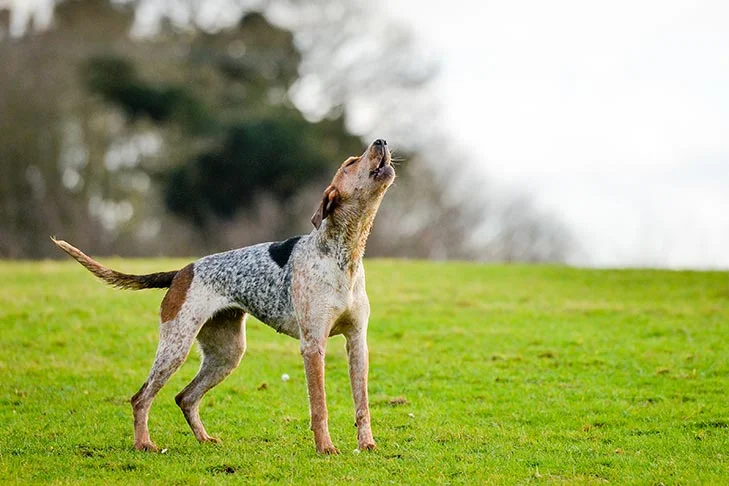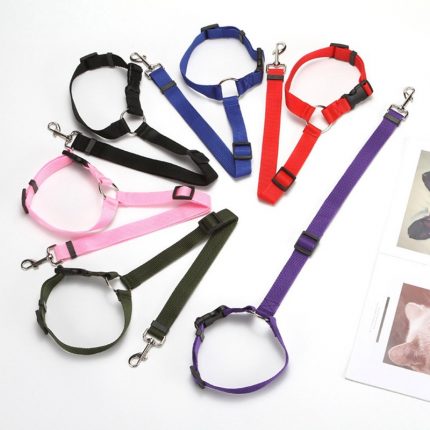Many dog owners have experienced moments when their furry companions seem to talk back to them. Whether it’s through barks, growls, or even subtle body language, dogs have a unique way of expressing themselves and engaging in what appears to be a form of communication with their human counterparts. This fascinating behavior raises several questions: Why Does My Dog Talk Back to Me? What prompts them to engage in this behavior? And what can we learn from their responses?
In this article, we will delve into the intriguing world of canine communication and explore the reasons behind why your dog may be talking back to you. By understanding the underlying motivations and signals behind this behavior, we can strengthen the bond with our four-legged friends and enhance our ability to communicate effectively with them.
 We will explore various factors that contribute to dogs talking back, including their inherent social nature, their desire for attention and interaction, and their instinctual need to establish dominance or express their emotions. Additionally, we will discuss the importance of recognizing and interpreting different forms of communication displayed by dogs, such as vocalizations, body language, and facial expressions.
We will explore various factors that contribute to dogs talking back, including their inherent social nature, their desire for attention and interaction, and their instinctual need to establish dominance or express their emotions. Additionally, we will discuss the importance of recognizing and interpreting different forms of communication displayed by dogs, such as vocalizations, body language, and facial expressions.
Understanding Why Does My Dog Talk Back to Me
Have you ever found yourself engaged in a conversation with your dog, only to be met with a seemingly talkative response? This intriguing behavior is not uncommon among our canine companions. While dogs may not possess the ability to speak in human language, they have their own unique ways of communicating with us. Let’s explore some key reasons Why Does My Dog Talk Back to Me?
1. Social Nature of Dogs
Dogs are highly social animals. They have evolved alongside humans for thousands of years, developing a deep bond and an understanding of our communication cues. When your dog talks back to you, it can be a sign of their desire to engage and interact with you. They may be seeking attention, companionship, or simply expressing their excitement to be a part of the conversation.
2. Desire for Attention and Interaction
Just like humans, dogs crave attention and interaction. Talking back can be their way of seeking your undivided focus and affection. By responding to your words or gestures, they hope to prolong the interaction and receive the attention they desire. It’s their way of saying, “Hey, I’m here, pay attention to me!”
3. Instinctual Need to Establish Dominance
In some cases, dogs may talk back as a way to assert their dominance or establish their position within the social hierarchy. This behavior is more common among dogs with strong personalities or those who have not received proper training and guidance. By talking back, they are attempting to challenge your authority or assert their own control over the situation.
4. Expression of Emotions
Dogs, just like humans, experience a wide range of emotions. When they talk back, it can be a way for them to express their feelings, whether it’s excitement, frustration, fear, or even happiness. Paying attention to their vocalizations, body language, and facial expressions can provide valuable insights into their emotional state and help you respond accordingly.
5. Mimicking Human Behavior
Some dogs are excellent observers and imitators. If they see you talking and engaging in conversations, they may try to mimic your behavior by talking back. This can be particularly common in breeds known for their intelligence and ability to learn from their surroundings. It’s their way of trying to fit in and be a part of the human social circle.
Practical Recommendations for Dealing with Why Does My Dog Talk Back to Me
Here are the practical recommendations of Why Does My Dog Talk Back to Me:
1. Establish Clear Communication Channels
When your dog talks back, it’s essential to establish clear communication channels. Use consistent verbal cues and hand signals to convey your expectations and commands. This will help your dog understand what is expected of them and reduce any confusion or frustration that may lead to excessive talking back.
2. Provide Sufficient Mental and Physical Stimulation
A bored dog is more likely to engage in excessive talking back as a means of seeking attention or stimulation. Ensure your dog receives sufficient mental and physical exercise to keep them engaged and satisfied. Incorporate interactive toys, puzzle games, and regular walks or playtime to keep their minds and bodies active.
3. Reward and Reinforce Positive Behaviors
Positive reinforcement is a powerful tool in shaping your dog’s behavior. When your dog responds appropriately and refrains from excessive talking back, reward them with praise, treats, or playtime. This will reinforce the desired behavior and motivate them to continue behaving in a more desirable manner.
4. Seek Professional Training and Guidance
If your dog’s talking back becomes a persistent issue or is accompanied by other behavioral problems, consider seeking professional training and guidance. A qualified dog trainer or behaviorist can provide personalized strategies and techniques to address the underlying causes of the behavior and help you establish effective communication with your dog.
5. Practice Patience and Consistency
Changing a dog’s behavior takes time and patience. Be consistent in your approach and expectations, and avoid getting frustrated or resorting to punishment. Dogs respond best to positive reinforcement and gentle guidance. With patience and consistency, you can gradually reduce excessive talking back and foster a healthier communication dynamic with your dog.
6. Engage in Interactive Training and Enrichment Activities
Engaging in interactive training sessions and enrichment activities can help redirect your dog’s energy and focus. Teach them new tricks, participate in obedience classes, or engage in interactive games that encourage mental stimulation. This will not only provide a productive outlet for their energy but also strengthen the bond between you and your furry friend.
7. Consider Seeking Professional Help
If your dog’s talking back persists despite your best efforts, it may be beneficial to consult with a professional animal behaviorist or veterinarian. They can assess your dog’s behavior, rule out any underlying medical conditions, and provide specialized guidance tailored to your specific situation.
Why Does My Dog Talk Back to Me – Conclusions
While dogs may not possess the linguistic capabilities to have a verbal conversation with us, they have their own ways of talking back. Understanding the reasons behind Why Does My Dog Talk Back to Me can help strengthen the bond between you and your furry friend.
 Remember, when your dog talks back, it’s important to pay attention to their cues and respond appropriately. Provide them with the attention and interaction they crave, but also establish clear boundaries and reinforce positive behaviors. By doing so, you can create a harmonious and fulfilling companionship with your beloved pet.
Remember, when your dog talks back, it’s important to pay attention to their cues and respond appropriately. Provide them with the attention and interaction they crave, but also establish clear boundaries and reinforce positive behaviors. By doing so, you can create a harmonious and fulfilling companionship with your beloved pet.
Our featured products:
So, the next time your dog talks back to you, embrace the opportunity to communicate and connect with them on a deeper level. Cherish these moments of canine conversation, as they are a testament to the unique and special bond we share with our four-legged companions.















